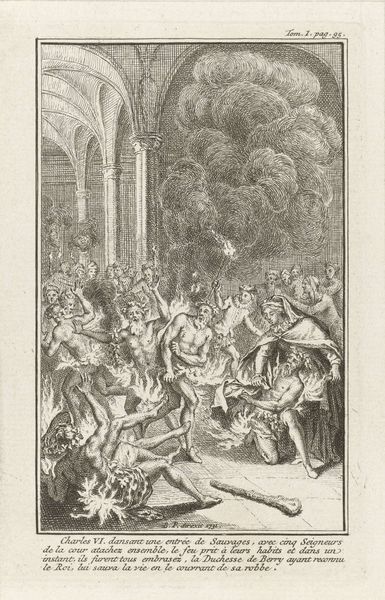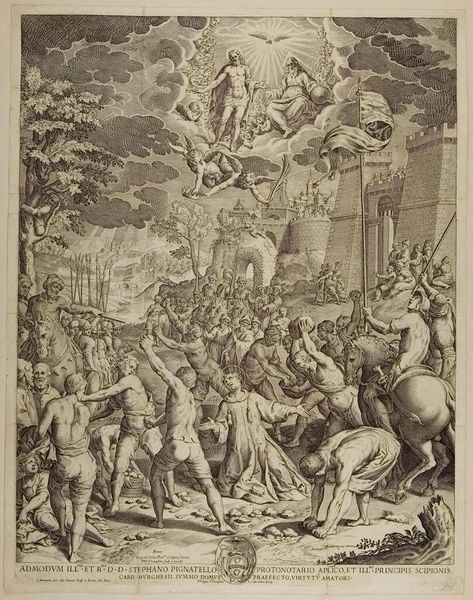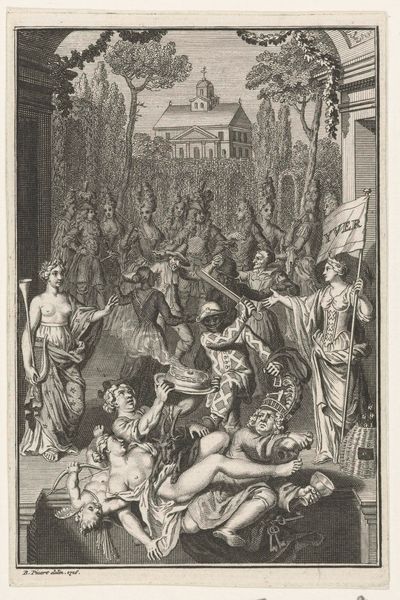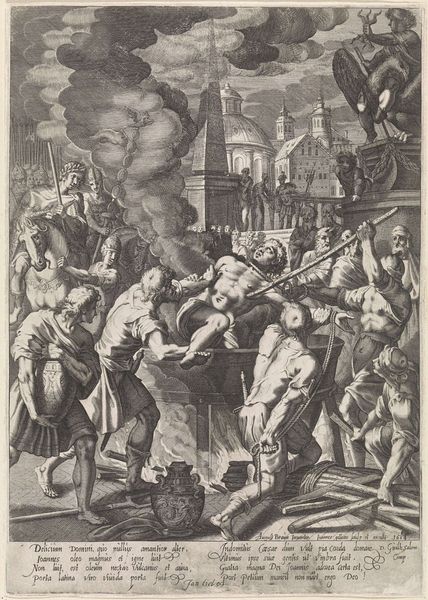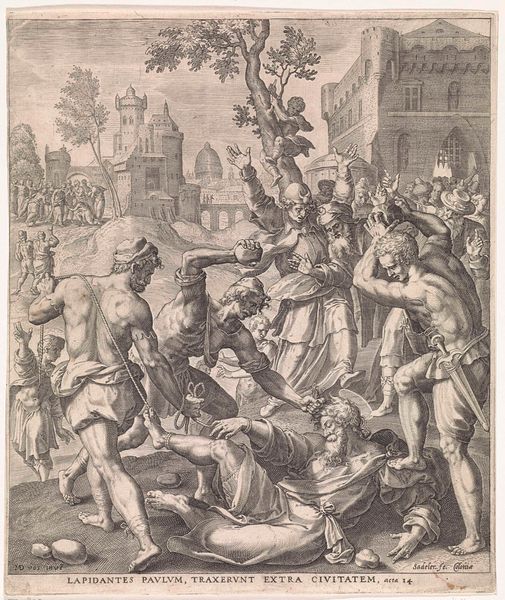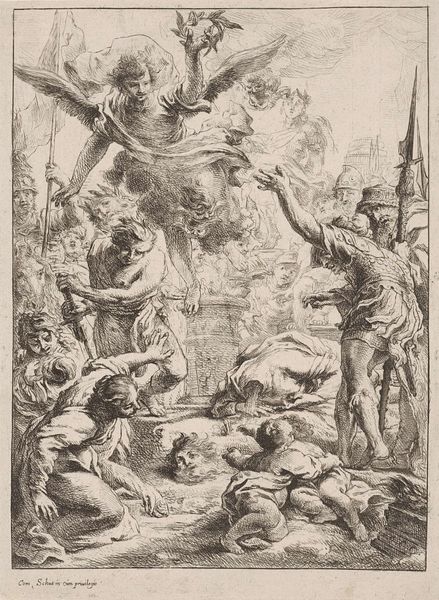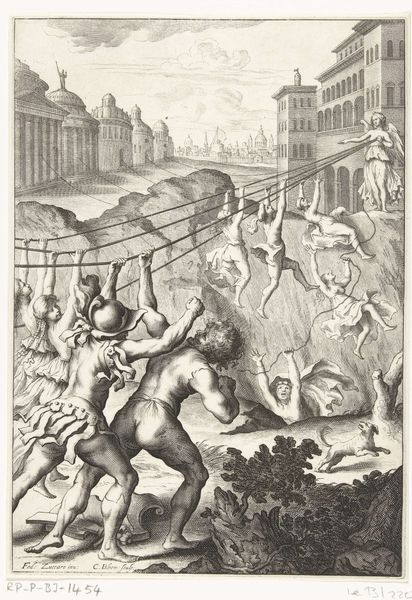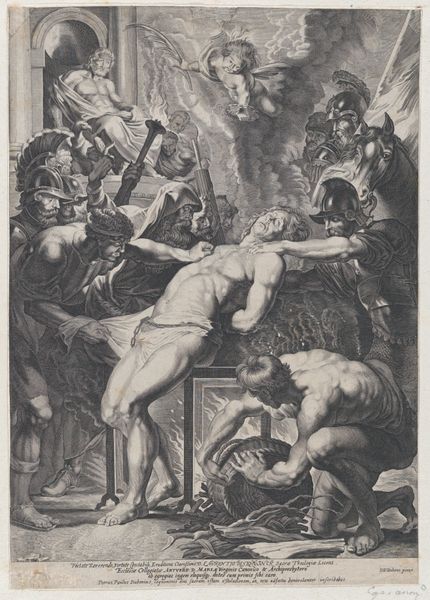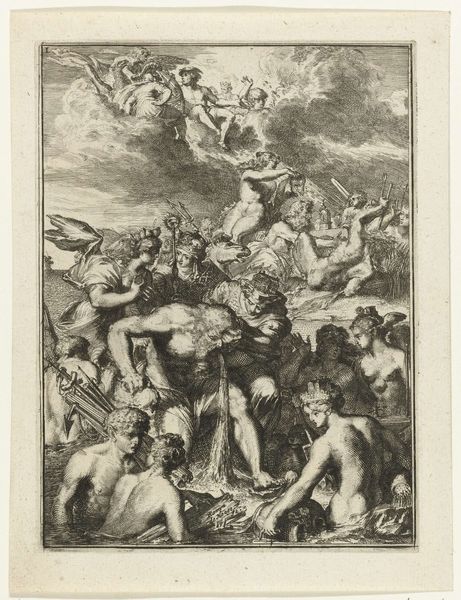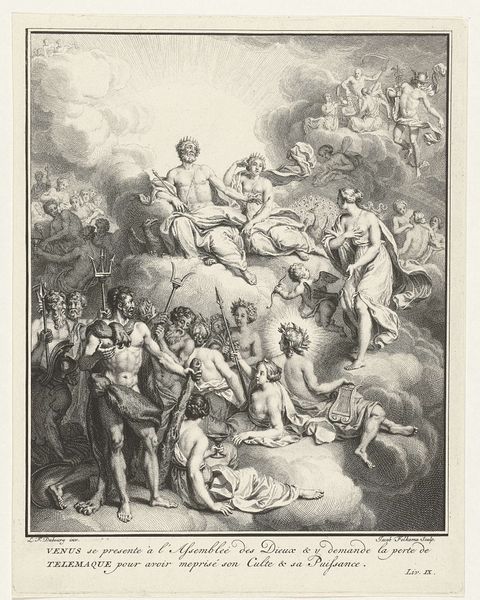
print, engraving
#
baroque
# print
#
old engraving style
#
figuration
#
line
#
history-painting
#
engraving
Dimensions: height 127 mm, width 76 mm
Copyright: Rijks Museum: Open Domain
Curator: This print is titled "Bal des Ardents," created in 1731 by Bernard Picart. The artwork, an engraving, is held in the Rijksmuseum collection. It is striking. I find the flurry of activity juxtaposed with the gothic architecture immediately grabs my attention. It feels chaotic, dangerous, and oddly theatrical all at once. Editor: Indeed. Structurally, the artist’s decision to use a line style generates movement, reflecting the violence inherent to the subject. The architectural features frame the core of the event, the grotesque figures illuminated from the dark space behind. It emphasizes not just the spectacle but its artificial nature. Curator: Absolutely. And considering the artwork's history-painting theme, its historical context matters immensely. "Bal des Ardents," or "The Ball of the Burning Men," depicts a tragic episode from 1393 involving Charles VI of France and his companions, where revelers dressed as wild men were set ablaze during a masquerade ball. This event exposed a major political crisis. Editor: True. By depicting figures in flames, the artist underscores a narrative about power. It speaks to the consequences of irresponsible rule and reckless indulgence that had the country on the brink of revolution centuries later. There is a clear indication here of the monarchy losing its authority, as these royal aristocrats inflict violence on each other, symbolizing societal fractures. Curator: You have a point there. In terms of medium, Picart's decision to use engraving enables sharp lines, and the black-and-white contrast contributes to the gravity of the scene. Editor: I agree. I think his mastery really brings home not just the physical horror, but the deeper fractures exposed at that moment in French history. The lines themselves tell of that era and of course point forward, historically. The very fact that this single incident was deemed important enough to be memorialized as a print decades after, really encapsulates the historical anxiety associated with absolutist power. Curator: Perhaps we could say this historical engraving reminds us to consider how we visually represent tragic moments. It challenges us to question which narratives become immortalized and how art influences the memory. Editor: Yes. It also underlines the fact that power is so easily and devastatingly corrupted. Thank you.
Comments
No comments
Be the first to comment and join the conversation on the ultimate creative platform.
